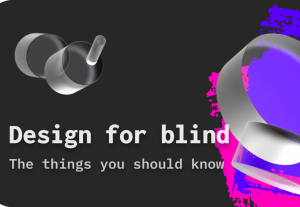- Accessibility, Customer Experience, Design, Empathy, Human factors, Technology, Technology for the Common Good, Usability, UX Education, UX Magazine
Tips on how to design for the blind.
Article by Oscar Gonzalez
Design for the Blind
The author explains how to design for people using Assistive Technologies and offers 5 tips.
Share:Design for the Blind
Share this link
- September 15, 2022
4 min read







